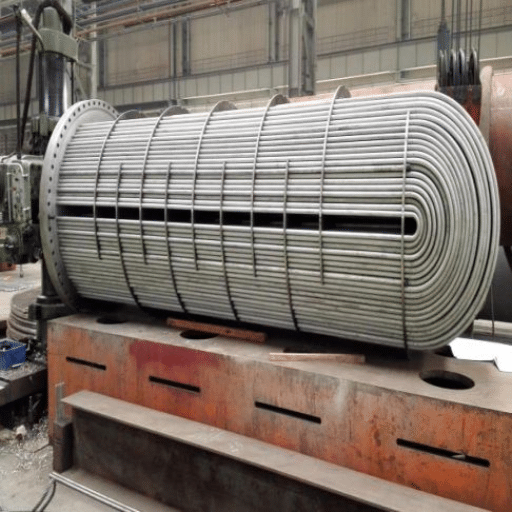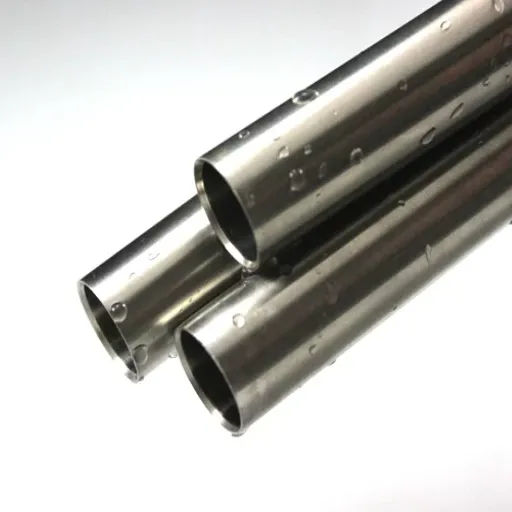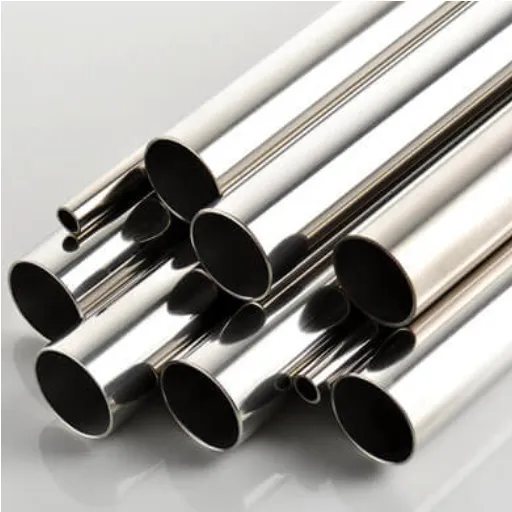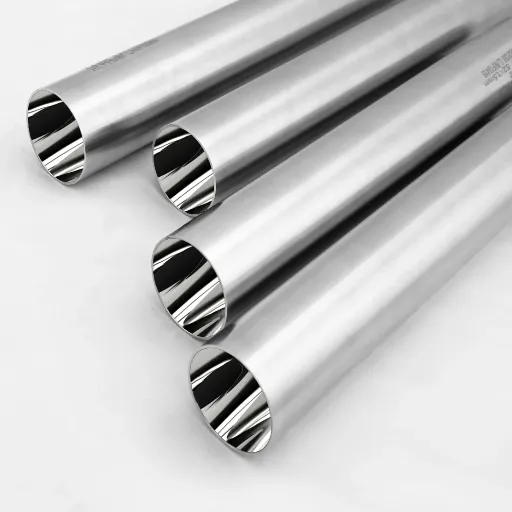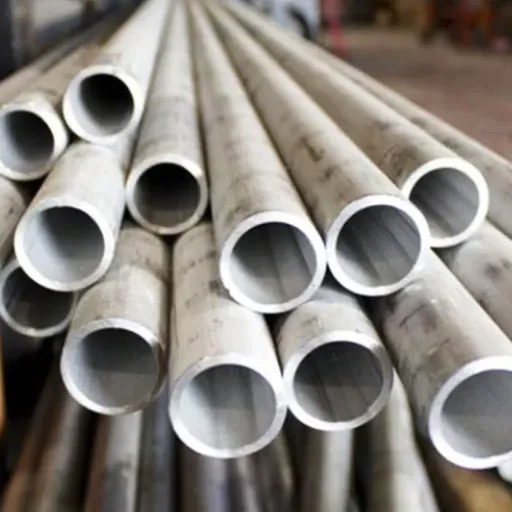The selection of either sterling silver or stainless steel can prove to be a tough call, particularly since both substances are endowed with individual traits and allure. It does not matter if you are thinking of them for jewelry, adornments, or practical articles; getting to know their nature, pros, and cons is crucial for making the proper decision. The article sheds light on the differences between these two metal types, looking at aspects such as toughness, upkeep, looks, and price. Ultimately, you will possess a more lucid viewpoint on the option that is most compatible with your requirements and way of life.
Understanding the Materials
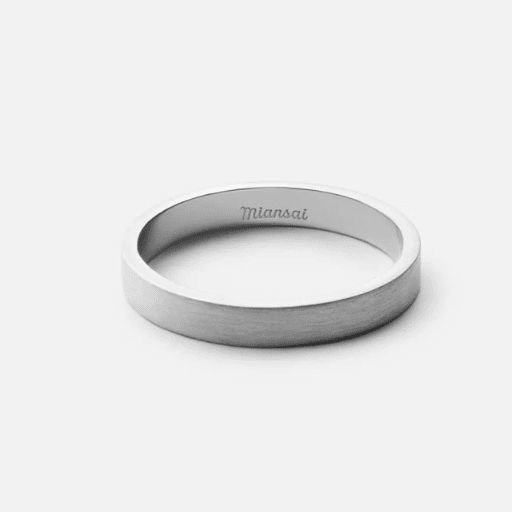
Stainless steel and sterling silver are two entirely different metals that are usually compared regarding their applications in daily life.
Stainless Steel
For its toughness demand, stainless steel is a very durable metal that won’t get rusted, corroded, or stained easily. It requires little care and even after several years still looks sparkling hence it’s good for wearing every day and practical uses.
Sterling Silver
In contrast, sterling silver is an alloy consisting mostly of silver but with other metals in small proportions to give it strength. It has a classic, high-quality shine and elegance but is still more prone to tarnishing and needs regular cleaning to keep its look bright.
Key Insight
To sum up, the decision between stainless steel and sterling silver finally hinges on the user’s priorities, whether these are long-lasting durability combined with easy care or classic aesthetic appeal. Both are multipurpose materials and have different benefits.
What is Sterling Silver?
Sterling silver has become quite a favorite and a common metal alloy for making jewelry and fine crafting. It is made up of pure silver 92.5% and 7.5% of other metals usually copper to improve silver’s strength and durability without losing beauty. The exact formulation allows sterling silver to have a brilliant shine and be very soft and easy to work with for making nice and complicated designs but still strong enough for daily wear. But on the downside copper’s presence in sterling silver can lead to the latter getting tarnished with time when it comes to air and moisture. Thus regular cleanings and proper storage are a must for the silver’s luster to last. Due to the presence of the noble metal, sterling silver’s timelessness and still comparatively lesser price than that of pure silver, it is a not-so-secret choice for a number of applications from fine jewelry to household items.
What is Stainless Steel?
Stainless steel, which mainly consists of iron, chromium, and nickel, is a strong and corrosion-resistant alloy that also contains other elements like carbon and molybdenum in varying quantities. The main trait of stainless steel is that it does not rust and was stained when a minimum of 10.5% chromium was added. This chromium compound is formed by oxygen in the atmosphere, and this way, a protective coating is created on the surface that is capable of healing itself, thus preventing any corrosion. The industries have broadly accepted stainless steel for its strength, low maintenance, and pleasing look hence its use in construction, cookware, medical instruments, and more. The material is also eco-friendly since it can be recycled completely, which is in line with modern environmental concerns.
Key Differences Between Sterling Silver and Stainless Steel
Quick Summary: Sterling silver is elegant and softer but tarnishes easily, while stainless steel is durable, low-maintenance, and tarnish-resistant.
| Key Point | Sterling Silver | Stainless Steel |
|---|---|---|
| Durability | Softer, less durable | Highly durable |
| Maintenance | Requires polishing | Low-maintenance |
| Appearance | Elegant, warm tone | Sleek, modern |
| Tarnish | Prone to tarnishing | Tarnish-resistant |
| Weight | Lightweight | Heavier |
| Cost | More expensive | Affordable |
| Use | Formal occasions | Everyday wear |
Durability Comparison
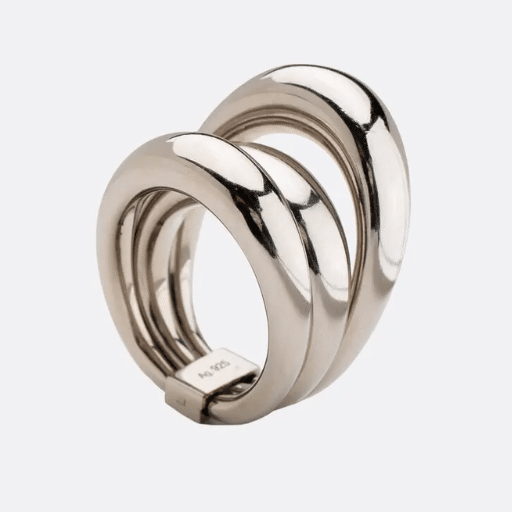
Stainless steel is significantly more durable, scratch-resistant, and tarnish-resistant compared to sterling silver, which is softer and prone to tarnishing.
| Key Point | Sterling Silver | Stainless Steel |
|---|---|---|
| Material | 92.5% silver | Iron-based alloy |
| Scratch Resistance | Low | High |
| Tarnish | Prone to tarnishing | Tarnish-resistant |
| Strength | Softer, malleable | Strong, rigid |
| Longevity | Requires care | Long-lasting |
| Maintenance | Needs polishing | Low-maintenance |
Durability of Sterling Silver Jewelry
The jewelry of sterling silver is adored mainly for its gracefulness and classic appeal but its durability relies upon different factors. The following are the aspects of durability in detail:
- Composition and Strength: Sterling silver consists of 92.5% pure silver and 7.5% of other metals, generally copper. This mixture makes it softer and more malleable than harder metals such as stainless steel, which causes it to get scratches and bend with heavy use.
- Scratch Resistance: Sterling silver is fairly low in scratch resistance owing to its softness. This characteristic calls for careful handling and precautionary measures to avoid damage during everyday wearing.
- Tarnishing and Oxidation: Sterling silver, due to its tarnishing nature, is very delicate. This will make it lose its shininess or develop a dark surface over time. Nevertheless, polishing and cleaning will make it regain its original surface.
- Environmental Sensitivity: The hardness of sterling silver is affected by various factors like humidity, exposure to chemical substances in the house, and even skin pH. Perfume or water usage for a long time can be a reason for faster tarnishing.
- Longevity with Maintenance: Sterling silver jewelry can be passed on from one generation to another if taken care of properly. Regular polishing, storing in anti-tarnish bags, avoiding harsh chemicals, and other such measures are essential for its beauty and integrity preservation.
Durability of Stainless Steel Jewelry
The sturdy and incredibly durable nature of stainless steel jewelry is its primary feature. A wizardry of sorts building material that is so strong and durable that it can be worn for a lifetime without losing its shiny surface and metal hardness. Staining steel jewelry has a lot going for it as seen in these five main features:
Corrosion Resistance
One of the most important properties of stainless steel is its resistance to oxidation and rusting which makes it a good choice for jewelry of the sort that is frequently exposed to water or sweat. This resistance in turn guarantees durability even in tropical climates.
Scratch Resistance
Being a very hard metal, stainless steel scratches much less than gold or silver. A very important feature that comes in handy for the active persons.
Non-Tarnishing
Stainless steel is one of the very few metals that do not lose their luster throughout their lifetime. The metal surface, once polished, can remain shiny for long without the need of frequent polishing or maintenance, thanks to the metal’s inertness.
Hypoallergenic Properties
Stainless steel is commonly categorized as hypoallergenic, meaning it is very unlikely to provoke allergic reactions. Hence, it is a very good choice of material for making jewelries for people with very sensitive skins and thus the added durability.
Strength and Toughness
The alloy composition is such that it can bear the brunt of the physical impact and pressure without bending or breaking. This feature makes it the longest lasting category of jewelry in terms of keeping its shape and size for a long time.
Conclusion: All these above advantages, stainless steel jewelry becomes a perfect combination of practical use and style, which is why it is most relished for daily wearing.
Everyday Use: Which Material Lasts Longer?
Stainless steel lasts longer for everyday use due to its superior durability, scratch resistance, and non-corrosive properties compared to sterling silver.
| Key Point | Sterling Silver | Stainless Steel |
|---|---|---|
| Durability | Softer, prone to scratches | Highly durable |
| Tarnish | Prone to tarnishing | Tarnish-resistant |
| Corrosion | May corrode over time | Non-corrosive |
| Maintenance | Requires regular care | Low-maintenance |
| Everyday Use | Suitable but delicate | Ideal for daily wear |
| Longevity | Shorter lifespan | Longer lifespan |
Hypoallergenic Properties
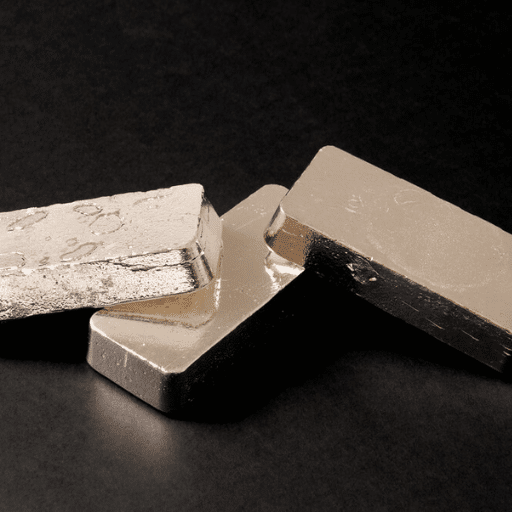
Hypoallergenic attributes for both sterling silver and stainless steel each have their pros and cons that attract the customers having sensitive skin. Following are the specific points and data about their hypoallergenic properties:
| Property | Sterling Silver | Stainless Steel |
|---|---|---|
| Nickel Content | Usually has very little or no nickel | Medical-grade is nickel-free or has minimal amounts |
| Skin Irritation | Less likely to irritate, but can react with chemicals | Passes severe sensitivity tests, especially surgical-grade |
| Allergy Resistance | Usually allergy resistant, tarnish may cause slight reactions | Very allergy resistant and non-tarnishing |
| Chemical Stability | May react with environmental chemicals | Chemically stable and less reactive |
| Suitability for Jewelry | Traditional beauty if properly made and cared for | Perfect for daily use, strong and low reactivity |
Is Sterling Silver Hypoallergenic?
Nevertheless, sterling silver can be likened to hypoallergenic material for a lot of people, still, it very much depends on its constitution and the existence of some specific alloys. Despite its being generally safe, there are certain conditions that affect its hypoallergenic properties. Here are five main points to which one needs to pay attention:
Alloy Composition
The sterling silver consists of 92.5% pure silver and the remaining 7.5% are metals, generally copper. The hypoallergenic quality of the alloy is to a big extent determined by the type of extra metals that are used.
Nickel Allergy
Nickel, if present in the alloy, can cause allergic reactions in people who are sensitive to nickel, which is a frequently encountered allergen.
Plating of Sterling Silver
Platinum and gold are the most common metals that are used in plating sterling silver jewelry to enhance their beauty and prevent tarnish. The plating can also serve as a protective layer reducing the risk of skin reactions for people with sensitive skin.
Oxidation Processes
Sterling silver may lose its original luster by tarnishing over time due to the presence of sulfur or humidity in the air. Skin irritation caused by tarnish is usually a minor issue and can be avoided by using proper skin care.
Standards of Quality
Jewelry that is labeled as “sterling silver” should have a silver purity of 92.5%. Such sterling silver of the best quality, devoid of typical allergens, is more likely to be hypoallergenic.
Having a good grasp on these aspects, people with sensitive skin can pick the right sterling silver jewelry pieces through informed decision-making.
Is Stainless Steel Hypoallergenic?
Steel that is stainless is usually thought to be hypoallergenic and is therefore widely used by people with delicate skin. Notably, surgical-grade stainless steel like 316L or 316LVM is made to avoid allergic reactions because of its very low nickel content and being compatible with the body. But, it is worth mentioning that there are differences among the grades of stainless steel. Some inferior grades may have a trapeze containing nickel higher than the threshold for causing allergic reactions to those with nickel allergies. In order to avoid this, people having allergies should always go for the top-quality surgical stainless steel alloy which is unlikely to cause skin irritation even after a long time of use. One should always verify the properties of the material prior to the purchase of stainless steel jewelry to make sure it conforms to hypoallergenic norms.
Choosing for Sensitive Skin
When it comes to choosing materials for sensitive skin, it’s important to correlate the most up-to-date information with reliable practices. Google’s search engine trends support the hypothesis that people with sensitive skins are more and more conscious about hypoallergenic alternative and materials that will cause no or little irritation at all. Among the best are surgical stainless steel, titanium, niobium, and 14K or higher gold as they are less likely to afford allergenic substances like nickel. Moreover, silicone jewelry or coated metals that provide a protective barrier are gaining popularity for their affordability and safety. If you place these materials on the top of your list and check the product specifications, you will be able to practically eliminate the risk of allergy while at the same time enjoying comfort and style.
Cost Analysis
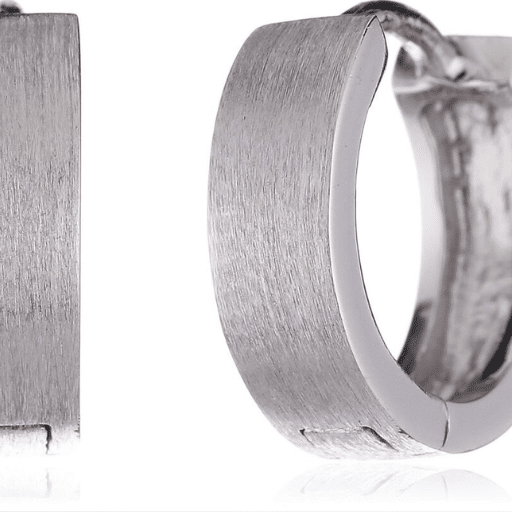
jewelry materials are to be considered, and knowing the costs related to the different materials is very important for taking a decision based on facts. A complete cost analysis of the five highly-rated hypoallergenic materials is mentioned below:
Surgical Stainless Steel
Price Range: $10 – $50 per piece
Details: The stainless steel used in surgery is easily available and very cheap, making it the choice of many for hypoallergenic jewelry. Its sturdiness as well as the very low chance of irritation makes it even more precious.
Titanium
Price Range: $20 – $100 per piece
Details: Titanium is light, resistant to corrosion, and is not allergic. Though it is a bit costlier than stainless steel, its strength and compatibility with the body make the price reasonable.
Niobium
Price Range: $15 – $80 per piece
Details: Niobium is highly appreciated for its outstanding features though it is not a common material. It is very resistant to corrosion and can be anodized for a variety of colors making it a versatile and budget-friendly option.
14K or Higher Gold
Price Range: $100 – $500 per piece (depending on karat and weight)
Details: Gold that is at least 14K purity has very few allergens. However, its price is very high because of its luxury status and it is considered the highest by the price spectrum.
Silicone Jewelry
Price Range: $5 – $30 per piece
Details: Silicone is the cheapest and safest option which is not allergic and that is why it is fashion and fitness jewellery. It gives you the advantages of being flexible, cheap, and safest if you have sensitive skin.
Once you go through these detailed costs, you will be in a position to evaluate the pros and cons of each material concerning your budget and personal needs.
Price of Sterling Silver Jewelry
Sterling silver is a very adaptable and fashionable material for jewelry, which gives a good balance of quality and price. Here’s a rundown of its price ranges and specifications:
Sterling Silver Rings
Price Range: $20 – $100
Details: The simplest silver bands are at the lowest point of the range, while very detailed designs with gems can be at $100.
Sterling Silver Necklaces
Price Range: $30 – $150
Details: Very light chains are inexpensive, but sterling silver pendants or statement necklaces with very fine craftsmanship are in the higher range.
Sterling Silver Bracelets
Price Range: $25 – $120
Details: Simple designs are not very expensive, however charm bracelets or those with engraved details are higher in price.
Sterling Silver Earrings
Price Range: $15 – $75
Details: Stud earrings are usually the cheapest option, while chandelier earrings with stones or very detailed designs are costly.
Sterling Silver Anklets
Price Range: $20 – $80
Details: Delicate, plain anklets can be bought at the cheapest price, while those that are decorated or come with stones take a price hike.
Sterling silver gives a variety of options that can match different styles and budgets, making it an ideal material for everyday casual and formal jewelry.
Price of Stainless Steel Jewelry
The jewelry made of stainless steel is recognized for its traits such as resistance to tarnish, being cost-effective and durability, hence it has become a favorite for daily wear. Below are examples of the different kinds of stainless steel jewelry with their usual prices ranges and descriptions:
Stainless Steel Rings
Price Range: $10 – $50
Details: The lower end consists of basic band designs, while in the higher price groups, we find rings with engraved patterns or with inlaid materials such as wood or resin.
Stainless Steel Necklaces
Price Range: $15 – $70
Details: The lower end consists of simple chains and pendants, while the higher priced items include larger statement pieces or the ones incorporating unique designs.
Stainless Steel Bracelets
Price Range: $20 – $60
Details: The thinnest chain bracelets are the least expensive, but cuffs or bracelets with elaborate detailing or the addition of leather or beads will be priced higher.
Stainless Steel Earrings
Price Range: $10 – $40
Details: The most basic studs are the least expensive, while dangles or decorative features on hoops and earrings increase the price.
Stainless Steel Watches
Price Range: $50 – $500+
Details: The most affordable entry-level stainless steel watches are still very much available, but there is also the possibility of a significant price increase for luxury styles with advanced features or designer branding.
The use of stainless steel products in jewelry makes up a mixture of fashion and practicality providing multi-purpose options that meet different tastes and budgets.
Value for Money: Sterling Silver vs Stainless Steel
In the process of comparing sterling silver and stainless steel, there are a number of factors that you need to take into account to know which is the more worth buying option. Hereafter is a summary of the significant considerations and their respective details:
Durability
Sterling Silver: Unfortunately, sterling silver is of a lower hardness and thus more easily scratched, bent, and tarnished than stainless steel. Gold is regular polishing and maintenance’s dependent for retaining its appearance.
Stainless Steel: On the other hand, stainless steel is extremely tough and thus impervious to scratches, corrosion, and tarnishing; hence it is a low-maintenance and long-lasting option.
Cost
Sterling Silver: The price of sterling silver jewelry is usually higher because of its greater material worth and it is often that its use in traditional and luxurious jewelry reflects the higher prices.
Stainless Steel: In contrast, stainless steel jewelry is cheap and appeals to those conscious of their budget, especially in casual or everyday designs.
Appearance
Sterling Silver: The classic aesthetic that sterling silver gives off with its bright and highly polished finish has come to be identified with fine jewelry.
Stainless Steel: Stainless steel is the other metal that has a sleek yet modern appearance. Its surface can have a very shiny polish or can be matte, brushed, etc.
Hypoallergenic Properties
Sterling Silver: Generally, pure sterling silver is hypoallergenic, but sometimes the nickel, which is an alloy used to strengthen the silver, may cause allergies in some people.
Stainless Steel: Surgical-grade stainless steel is one of the hypoallergenic types and thus suitable for people with sensitive skin.
Maintenance Requirements
Sterling Silver: The metal needs to be cleaned and polished quite often in order to avoid tarnish and keep its shine. Tarnish comes about quite quickly when the metal is exposed to air and moisture.
Stainless Steel: Maintenance is also minimal because the metal does not tarnish. To keep it looking new, cleaning it occasionally with soap and water should suffice.
Each of the two materials has its own advantages that make them appealing for different users with differing preferences. While sterling silver is often associated with tradition and grace, stainless steel comes with practicality and longevity at a lower price.
Maintenance and Care
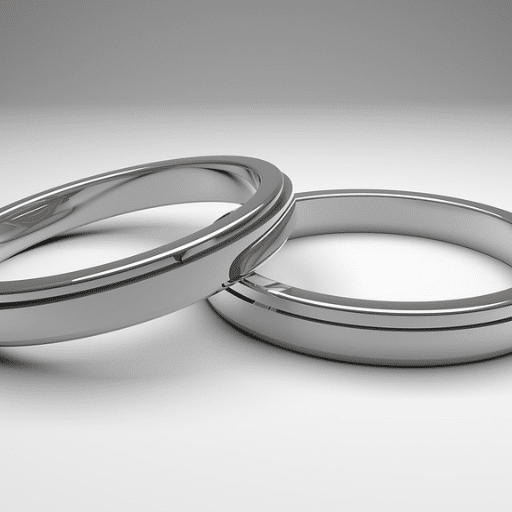
To maintain your jewelry’s longevity and beauty, adhere to the following care techniques:
Regular Cleaning
Dirt and oils can be removed with a soft cloth or a jewelry polishing cloth made for special use.
The shine will be maintained for sterling silver by using a silver cleaner or a paste made with baking soda and water.
Proper Storage
To prevent scratches, store every piece in a soft pouch or a lined jewelry box separately.
Use anti-tarnish strips or airtight containers with sterling silver to slow down tarnishing.
Avoid Harsh Chemicals
Jewelry should be kept away from household cleaners, perfumes, and lotions as they can affect the surface or cause discoloration.
Take off your jewelry before going into chlorinated pools or hot tubs.
Wear Responsibly
Do not wear jewelry during sports, heavy lifting, or gardening as these would cause scratches, dents, or breakage.
Before working with such materials, remove rings or bracelets beforehand.
Periodic Inspections
Check for loose stones, clasps, or bent prongs frequently to avoid loss or damage.
Have your jewelry professionally cleaned and inspected once a year.
If you adhere to these care instructions, it is possible that your sterling silver or stainless steel jewelry will still be beautiful and durable for a long time, up to years.
Caring for Sterling Silver Jewelry
In order to keep your sterling silver jewelry looking beautiful and lasting for a long time, take care of it with these essential tips:
Right Storage
Keep sterling silver in a place that is cool and dry to stop it from tarnishing.
Delay discoloration by using anti-tarnish cloths or pouches.
Moisture and Chemicals
Keep your jewelry away from moisture, perfumes, hairsprays, and other chemicals.
Do not wear silver jewelry in pools, hot tubs, or while showering.
Cleaning
Jewelry should be cleaned properly with a soft, lint-free cloth to remove oils and dirt.
For heavier tarnish, a silver-specific cleaner or polishing paste can be used.
Contact
Before doing cleaning, gardening, or exercising, remove your sterling silver jewelry to avoid scratches or damage.
Check and Maintenance
Regularly inspect clasps, chains, and settings to make sure there are no damage.
For delicate or worn pieces, seek professional cleaning and repairs when necessary.
Your sterling silver jewelry will be able to retain its brilliance and remain a timeless treasure by adhering to these practices.
Caring for Stainless Steel Jewelry
Stainless steel jewelry is a material that is very durable, inexpensive, and easy to take care of. To keep your stainless steel jewelry bright and in perfect condition over the years, here are the care tips you should follow:
Regular Cleaning
Stainless steel jewelry should be cleaned with a soft cloth and warm soapy water. Make sure to rinse and then dry it gently with a clean, soft towel.
Avoid Strong Chemicals
Discoloration or damage may occur if the jewelry is exposed to bleach, chlorine, and cleaning products used in the house.
Proper Storage
To avoid scratches caused by other items, store your stainless-steel jewelry in a dry, separate pouch or jewelry box.
Occasional Polishing
You can use either stainless steel polish or a microfiber cloth to bring back the shine and remove minor scratches.
Remove When Doing Certain Activities
Bathing, swimming, or doing heavy physical work are some of the activities that should not be done while wearing jewelry since these activities will expose the jewelry to moisture and chemicals.
Your stainless-steel jewelry will always be attractive like the day you got it if you just practice these simple things.
Long-term Maintenance Considerations
Concerned about long-term maintenance, am always storing bracelets, necklaces, and rings made of stainless steel in the right way, cleaning them regularly with mild soap and water, and doing polishing them from time to time just to keep them shiny. avoiding harsh chemicals is another thing that , while always taking off jewelry during swimming or heavy work activities. steps are what help me achieve that my jewelry is of excellent quality even after a long time.
References
- The Properties of Standard Sterling Silver, with Notes on Its Manufacture
Published in Google Books, this resource provides insights into the properties and manufacturing of sterling silver.
Read the study - Study on the Microstructure, Mechanical Properties, Tarnish, and Corrosion Resistance of Sterling Silver Alloyed with Manganese
Published in ScienceDirect, this paper examines the mechanical and corrosion properties of sterling silver.
Read the study - Tarnish-Proof Sterling Silver: Understanding the Limitations
Published by the Santa Fe Symposium, this document discusses the corrosion resistance of sterling silver and stainless steel.
Read the study
Frequently Asked Questions (FAQ)
What is the difference between sterling silver and stainless steel?
Sterling silver is an alloy made with 92.5% pure silver and 7.5% other metals, often copper, while stainless steel is primarily made of iron, chromium, and other elements. This difference in composition affects their properties, such as luster, durability, and resistance to tarnish or corrosion.
Is sterling silver considered a precious metal?
Yes, sterling silver is classified as a precious metal due to its high silver content and value. In contrast, stainless steel is a more affordable metal and not categorized as a precious metal.
How durable is stainless steel compared to sterling silver?
Stainless steel is known for its durability and scratch-resistant properties, making it ideal for everyday use. In comparison, sterling silver is softer and more prone to scratches and dents, requiring more maintenance to keep its luster.
Can sterling silver tarnish?
Yes, sterling silver can tarnish over time due to exposure to air, moisture, and certain chemicals. However, proper care can minimize tarnishing, whereas stainless steel is resistant to tarnishing and corrosion, requiring less upkeep.
What types of jewelry are made from stainless steel?
Stainless steel is commonly used in various jewelry pieces, including necklaces, bracelets, and earrings. Its hypoallergenic properties make it a popular choice for those with sensitive skin.
What are the pros and cons of stainless steel jewelry?
Pros of stainless steel jewelry include its low maintenance, durability, and scratch resistance. However, cons of stainless steel may include a lack of the luxurious luster associated with precious metals like sterling silver and potential discomfort if not properly finished.
How does the price of sterling silver compare to stainless steel?
Generally, sterling silver jewelry pieces are more expensive than stainless steel items due to the high value of pure silver. The cost can vary based on design, craftsmanship, and brand, but stainless steel offers a more budget-friendly option.
Can I find intricate designs in stainless steel jewelry?
Yes, stainless steel jewelry can feature intricate designs and styles similar to those found in sterling silver pieces. Advances in manufacturing techniques have made it possible to create detailed and artistic stainless steel jewelry.

